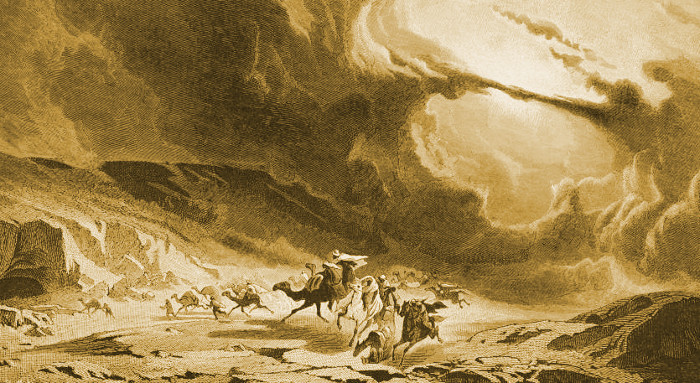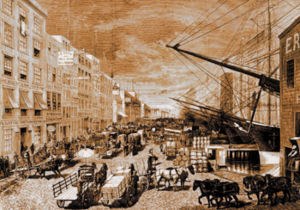Tilsha and the Commonwealth
Capital: Duntara
Ruler: King Euthan of House Ancoret
Govn’t: Democratic Constitutional Monarchy
Language: Antarish (official)

The Commonwealth Kingdoms are comprised of four independent, but united nations on the western side of Tarrona. All are closely allied militarily as well as economically. These nations are Tilsha, Alandar, Braondel, and the Eldren freehold of Tir Andraith. Among these, the greatest and most powerful kingdom is the kingdom of Tilsha, once known in ancient times as Tir Ultar.
Following the War of Golla and Marada, the world plunged into a new dark age. A period of feudal warfare consumed the many petty kingdoms and fiefs of western Tarrona, today known as the Broken Kingdoms, beginning the First Feudal Period. Eventually, several warlords consolidated power, forming the kingdoms of Alandar, Calamor, Laradel, and Tilsha. Duntara became the great capital of Tilsha, and soon after, the kingdom of Alandar was restored with its capital established at Tandalga. Alandar became both an enemy and an ally of Tilsha over the course of several centuries.
During the War of Tyranny, Tilsha and most of the realms of Tarrona were quickly conquered, and Duntara itself was smashed by relentless sieges. The Tyrants rebuilt Duntara as a port city for their empire, and many structures of Tricarian architecture still form the backbone of Duntara today. After King Clovis liberated Tarrona, another hero of the war, Ulrick Ancoret, was given the throne of Tilsha by the people.
Tilsha eventually came to dominate most of western Tarrona, becoming the economical, industrial, and military powerhouse of western Tarrona. The Commonwealth Accord was officially formed in 1455 CA against the rising threat of Kendes, uniting Tilsha, Alandar, Braondel, and Tir Andraith in a concord treaty of for trade and mutual military protection. Bryland also enjoys a protectorate status with the Commonwealth, and the Commonwealth maintains friendly diplomatic relations with Ambricar, Suddaean, and Canath, with strained but cordial relationships with Strigovia and Leleka (until they fell under the control of the Grand Imperium).

Kingdom of Suddaea
Capital: Bahar Hashad
Ruler: King Kibar
Govn’t: Absolute Monachy with Centralized Government
Language: Suddaean
The desert kingdoms of southern Tarrona are a collection of loosely allied nations, of which the kingdom of Suddaea is by far the wealthiest and most prominent. Much of the region is covered by vast stretches of desert—chiefly the arid Ruballi Desert (also known as the Burning Waste) separating Ambricar and Dralia, and the Suddaean Desert, which spans eastern and southern Suddaea. Contrary to its popular image as a lifeless desert kingdom of rolling dunes and swirling sandstorms, much of western and southern Suddaea is graced by fertile farm lands, rolling plains, rich savannas, and great tropical oases.

The Thanathage unleashed at the end of War of Golla and Marada killed some fifty to sixty percent of the native population—which was devastating, to be sure, but far less than the death toll suffered in more populous regions. The primary reason for the lower death toll in Suddaea was likely due to the dispersed nature of the population and the isolation of the more remote tribes. The largest of the surviving tribes, the Baytuhn, had established several fortified settlements by 400 CA. From there, the Baytuhn chiefs consolidated dozens of smaller tribes. Following his victory over the rival city-state of Abur Sutar in 442 CA, King Selhaddon the Great declared himself king of the Suddaean.
Gold, silver, and diamond mines supported much of Suddaea’s economy through the Age of the Three Realms. As absolute monarchs, the kings of Suddaea owned the entire wealth of the nation and spent lavishly to support the construction of towering palaces, temples, statues, and monumental public works dedicated in their honor. The Grand Palace of the Laiht Mahal was constructed in Bahar Hashad between 715 CA and 732 CA, and was made with white and blue marble, golden domes, tiles of lapis lazuli and gold-etched marble, and even an expansive mosaic composed entirely of gemstones.
But the War of Tyranny brought the Kingdom of Suddaea crashing down. Its massive army, aided by powerful mages, put up considerable resistance against the Triclops forces, but by 1322 CA, Suddaea had been effectively defeated. What remained of the surviving Suddaean army retreated deep into the desert, where they hid with the nomadic tribes and worked to build up their forces. In 1325 CA, Prince Azzard, rightful heir to the throne, took his forces to join up with Clovis, Glantrus, and the remnants of Antaria, forging a new resistance army. Together, Clovis, Glantrus, and Azzard would eventually liberate Suddaea and join Darius in the final battle against the Tricarian Triumvirancy.

Following the War of Tyranny, Azzard returned to the Kingdom of Suddaea and took the throne as king, restoring Suddaea’s traditional line of kings. Thanks to its valuable gold, silver, and diamond resources, the Suddaean economy quickly recovered.
Today, Suddaea is one of the most powerful nations in the world, and is ruled by the benevolent King Kibar. Its capital is a hub of trade and activity and a bustling metropolis of nearly two million people. The Suddaean army consists of over thirty divisions comprised of juggernauts, airships, aircruisers, and a formidable naval fleet. With the onset of the War of Wars, Suddaea found itself threatened by the rapid southern incursions of Kaldean forces into the Baronies of Ambricar and declared an alliance with its long-time trade partners, Tilsha and the Commonwealth Kingdoms.
Baronies of Ambricar
Capital: Tareneth
Ruler: The Grand Council of Lords
Govn’t: Confederation of Baronial Estates
Language: Antarish (official)
Ambricar is one of the youngest nations, although it is more of a collection of separate confederated baronies and earldoms than a single, unified nation-state. The region of Ambricar had been a wilderness frontier until the rise of the first kingdom of Antaria, when new settlements and trade routes opened much of the eastern territories. By 800 CA, cities such as Arbital, Balencraig, and Rodreth had been well established. Under the rule of Antaria, the region was divided into six earldoms, four counties, and sixteen baronies.
During the Great Tyranny, Ambricar was held under the brutal regime of Tricarian Triumvirate. The region was liberated by the resistance armies of Clovis, Glantrus, and Azzard between 1326 and 1327 CA. Following the final victory in 1330, Clovis returned to eastern Tarrona and restored the kingdom of Antaria.
However, Kaldea’s devastating siege against northern Antaria in 1380 effectively toppled the kingdom again. After the destruction of the capital city of Ard Antar, the Kaldean forces burned and plundered every town and village north of the Tanawn River, established a desolate buffer region known as the Ruined Lands. Chaos consumed the former territories of Antaria and the baronies and earldoms in the region were thrown into a period of feudal war.

In 1491 CA, the earls, counts, and barons of Ambricar worked out a mutually satisfactory treaty. The individual earldoms, counties, and baronies would be self-governed, and the Council would meet twice a year in Eddonkeep in Tareneth, to be attended by the lords or their appointed representative. In these meetings, laws, treaties, and other matters of state would be attended. This current system of governance, while proving itself less than perfect, has nevertheless maintained the region of Ambricar under a relatively stable period of peace for the last fifty years.
In 1534 CA, the ruthless armies of the Grand Imperium stormed through the kingdom of Strigovia and swept full-force into the unsuspecting territories of the Baronies of Ambricar, bringing the baronial coalition to its knees.
Kendes and the Grand Imperium
Capital: Kalkhemed
Ruler: The Imperatrix (formerly the Tzarahad)
Govn’t: Totalitarian Empire
Language: Kendes
Although the northern nations of Tarrona are commonly called the Dark Kingdoms, this moniker originated from Antaria. The phrase simply means “the Unknown Kingdoms,” since nothing was known of them at the time.
For thousands of years, the region of Kendes was inhabited by tribes of people collectively known as the Kendes people, who held their own set of traditions and beliefs (the so-called “Barbarous religions” as termed by the Archidoxy). Although they never formed a cohesive nation, they were united by these traditions, and they often joined together to fight competing Ogrum and Scaithi tribes.
However, begin around the 6th century, the people of Alandar, Velekia (later called Leleka), and central Tarrona (later called Strigovia) begin to migrate north, entering into the region of Kendes where they slowly being to displace the native Kendes tribes. This displacement was gradual, and the new inhabitants adopted many of the native traditions, including their religion and a formalized dialect of their dominate language. Even so, the people of the native tribes themselves became increasingly marginalized, and by the 1200s, were relegated either to the remote regions of Kendes, or simply shed their tribal identities for assimilation into the expanding urban and industrial centers of western Kendes. Native tribal people of Kendes are often termed “tribies,” a term that is sometimes considered pejorative, depending on context.
The formal alliance of Kendes, Carsovia, and Kaldean began just after the War of Tyranny. It was then that several Samrahaj (noble warlords) banded together, constructing nations and consolidating power. These nations continued fighting against one another, but eventually the strongest prevailed, leaving three distinct kingdoms: Kaldea, Kendes, and Carsovia. The expansion of Kendes, Carsovia, and Kaldea through northern Tarrona alarmed many, but their expansion fell short of the Antarian border. Even so, skirmishes between Kaldea and Antaria along the Vestulga River only escalated as tension between the nations continued to rise. Kaldean piracy also became a major problem.

By 1450 CA, Kendes had become a highly industrialized nation. Kalkhemed, the capital, was a city of mighty towers, reaching spires, and iron walls. Their technology appeared to be well ahead of Tilsha and Armillia, and their military might grew with every passing year.
In the late 1490s, the warlord Malkavek Ŝangsyer solidified his military and political control over Kendes. In his rise to become the new Tzarahad, Malkavek Ŝangsyer saw to the brutal extermination of all descendants of the deposed House Vlakata, ensuring none could challenge his right to the Raven Throne. Led by the new Tzarahad, Kendes grew to become a mighty kingdom of industry and sorcery. The Tzarahad established the Samaara Hadrahan as the central governing authority for Kendes, Tir Scaithi, Carsovia, and their Kaldean allies. Carsovia became the Carsovian Dominion under the control of the Blood-Barons and Kaldea was ruled over by the Supreme Commander of the Central Kaldean Regime—but all were subjects of the Tzarahad and the Samaara Hadrahan.
In the late 1520s and early 1530s, war-mongering factions within the Samaara Hadrahan pressed for an invasion of Leleka to “retake” the region of Phana (then held by Strigovia) which had once belonged to Tir Scaith. Drunk with power and eager to relive the glories of his youth, the Tzarahad committed the Grand Imperium’s vast military and industrial resources to the new war effort.
In 1532, Leleka and parts of the northern Moytura region of Strigovia were annexed into the Grand Imperium—Leleka willingly (likely under duress), and northern Stragovia through invasion. Soon after, in 1533 and 1534, the Kaldean army invaded the Ruined Lands north of the Baronies of Ambricar to reclaim territories once held by Kaldea.
Today, the northern alliance is formally known as the Mavaya Vhashul ke Samaara Hadrahan (Grand Alliance of the Imperial Assembly), or simply the Grand Imperium. It is ruled by an Imperatrix who overthrew the former Tzarahad, and its governing body is the Samaara Hadrahan (the Imperial Assembly). The Grand Imperium consists of the nations of Kendes, Kaldea, Carsovia, Tir Scaith, Leleka, and the recently conquered regions of Strigovia and Ambricar.
